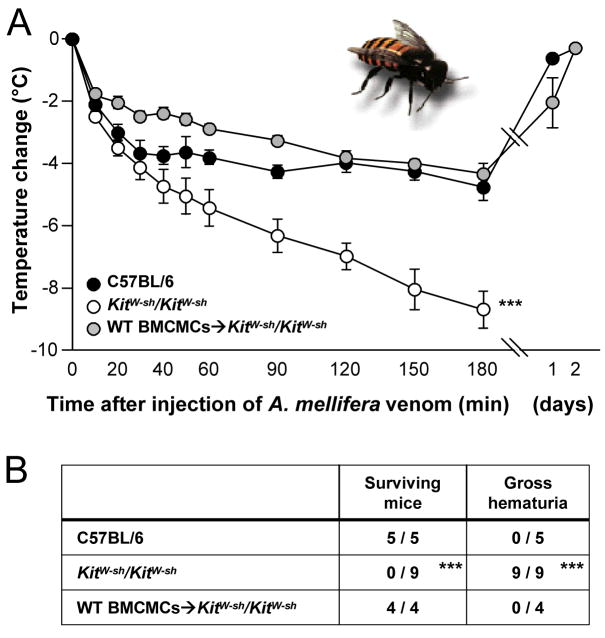Fig. 6.
Mast cells can limit the toxicity of honeybee venom. (A) Changes in rectal temperature and (B) 24-hour survival and occurrence of gross hematuria after subcutaneous injection of A. mellifera venom (A.m.v.) at five different sites (three injections distributed over the length of the back skin and two into the belly skin, each containing 100 μg A.m.v. in 50 μl PBS) into WT mice, mast cell–deficient KitW-sh/KitW-sh mice, or KitW-sh/KitW-sh mice that had been engrafted intra-dermally, 6 weeks earlier, with 1.5 × 106 BMCMCs into each of the five injection areas (WT BMCMCs→KitW-sh/KitW-sh). The amount of venom per injection (100 μg) roughly reflects the amount that can be delivered by one bee sting. All of the WT or WT BMCMCs→KitW-sh/KitW-sh mice appeared healthy, and their body temperatures returned to baseline within 2 days. ***P < 0.005 versus either C57BL/6 or WT BMCMCs→KitW-sh/KitW-sh mice. Reproduced, with the permission of the publisher, from reference [26].

